Creating an effective Individual Behavior Plan (IBP) is essential for addressing the unique behavioral challenges faced by children with autism. Let’s take a moment to explore six important steps together!
Together, we can make a meaningful difference in your child's life. So, let’s dive into this journey with open hearts and minds! We’re here to help you every step of the way!
Creating an effective individual behavior plan (IBP) is essential for supporting the unique needs of children with autism. However, many caregivers encounter challenges in navigating this complex process. By recognizing the importance of a tailored approach, you can foster positive behaviors and enhance social skills. Ultimately, this promotes independence and growth for your child.
So, how can you ensure that your strategies are not only effective but also adaptable to your child's evolving needs? Let’s explore this together! 🌟
An individual behavior plan is a personalized strategy designed to address specific behavioral challenges faced by a youth with autism. It’s so important because an individual behavior plan provides a clear way to understand and change behaviors that might hold back the young person’s growth. An effective individual behavior plan (IBP) doesn’t just aim to reduce negative behaviors; it also promotes positive behaviors, social skills, and independence.
By creating a tailored approach, caregivers and clinicians can make sure that the interventions are relevant and effective. This ultimately leads to better outcomes for the young individual and their family. Let’s explore this together and see how we can make a difference!

Creating an effective individual behavior plan starts with understanding the unique needs of your child. This journey involves gathering insights from various sources—parents, teachers, and clinicians—to get a well-rounded view. At Rori Behavioral Innovations Inc., we’re dedicated to providing families with the tools they need for success, making this assessment a vital first step.
Using standardized assessment tools along with observational data and interviews can reveal important insights into your child’s behavior, triggers, and the influences around them. Remember to celebrate their strengths and interests while also identifying areas for growth. A thorough evaluation by psychiatric experts can really boost the credibility of this process.
And don’t forget, trusting play can reduce the pressure of managing your child’s development. It allows for a more natural understanding of their needs. This comprehensive approach lays the groundwork for an individual behavior plan that specifically caters to your child’s requirements, fostering their growth and independence. As Vince Gowmon wisely puts it, "Healing is not about growing into a better version of who you think you are, but rather unravelling all you are not so you remember all you’ve ever been."
Let’s explore this together!
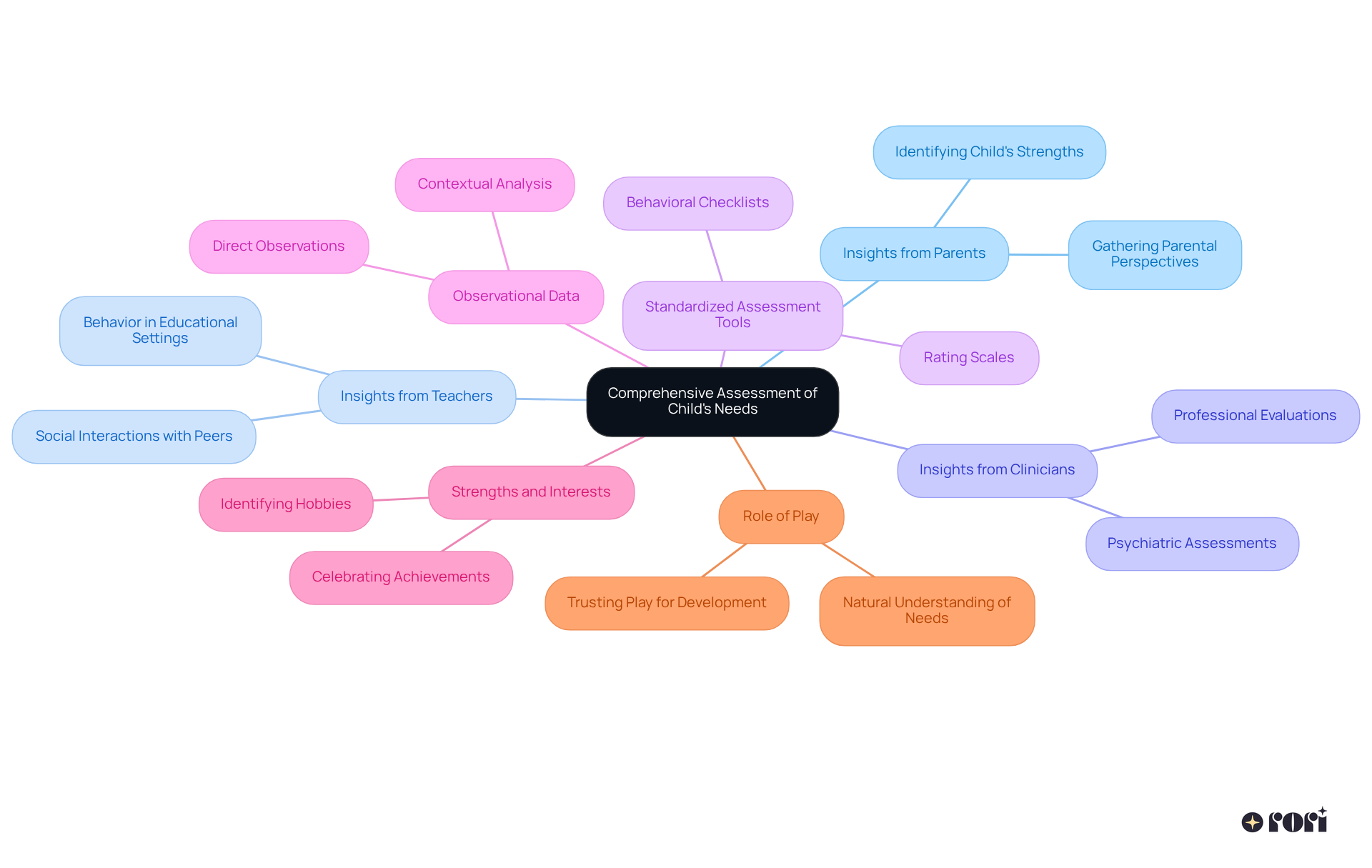
Creating an effective individual behavior plan can feel like a big task, but it’s all about including some key components to make it work well for your child. Let’s break it down together!
Conduct Objectives: Start by setting clear and measurable goals. These should pinpoint which behaviors you want to encourage or reduce. Aim for goals that are realistic and achievable, focusing on boosting positive behaviors while gently addressing the inappropriate ones.
Intervention Strategies: Next, think about the strategies you’ll use. Choose evidence-based techniques that fit your child’s unique needs. This might include positive reinforcement, modeling, or social skills training, all rooted in Applied Behavior Analysis (ABA) principles. Remember, it’s crucial to prioritize safety and steer clear of harmful interventions!
Data Collection Methods: It’s also important to track your child’s progress. Use systematic methods like frequency counts, ABC (Antecedent-Behavior-Consequence) charts, and rating scales. These tools provide objective insights into behaviors and help you adjust your strategies as needed. Consider using electronic data collection tools—they can make monitoring easier and improve your decision-making process.
Support Strategies: Don’t forget about the support for parents and caregivers! Providing resources and training sessions can help everyone get on the same page with the IBP’s procedures and data collection methods. This consistency across different environments is key. Plus, obtaining informed consent from parents or guardians is essential to respect individual rights and ensure transparency.
Review Schedule: Finally, set up a timeline for regular evaluations and updates to the strategy based on your child’s development. Continuous assessment is vital—it allows you to make changes that reflect any shifts in behaviors or environments. Regular meetings with everyone involved, including parents, teachers, and therapists, can really boost collaboration and communication, which are crucial for the IBP’s success.
By weaving these components together, an individual behavior plan can truly meet the individual behavioral needs of children with autism. It’s all about promoting better social skills and enhancing their overall quality of life while honoring cultural values and family preferences. Let’s explore this together!
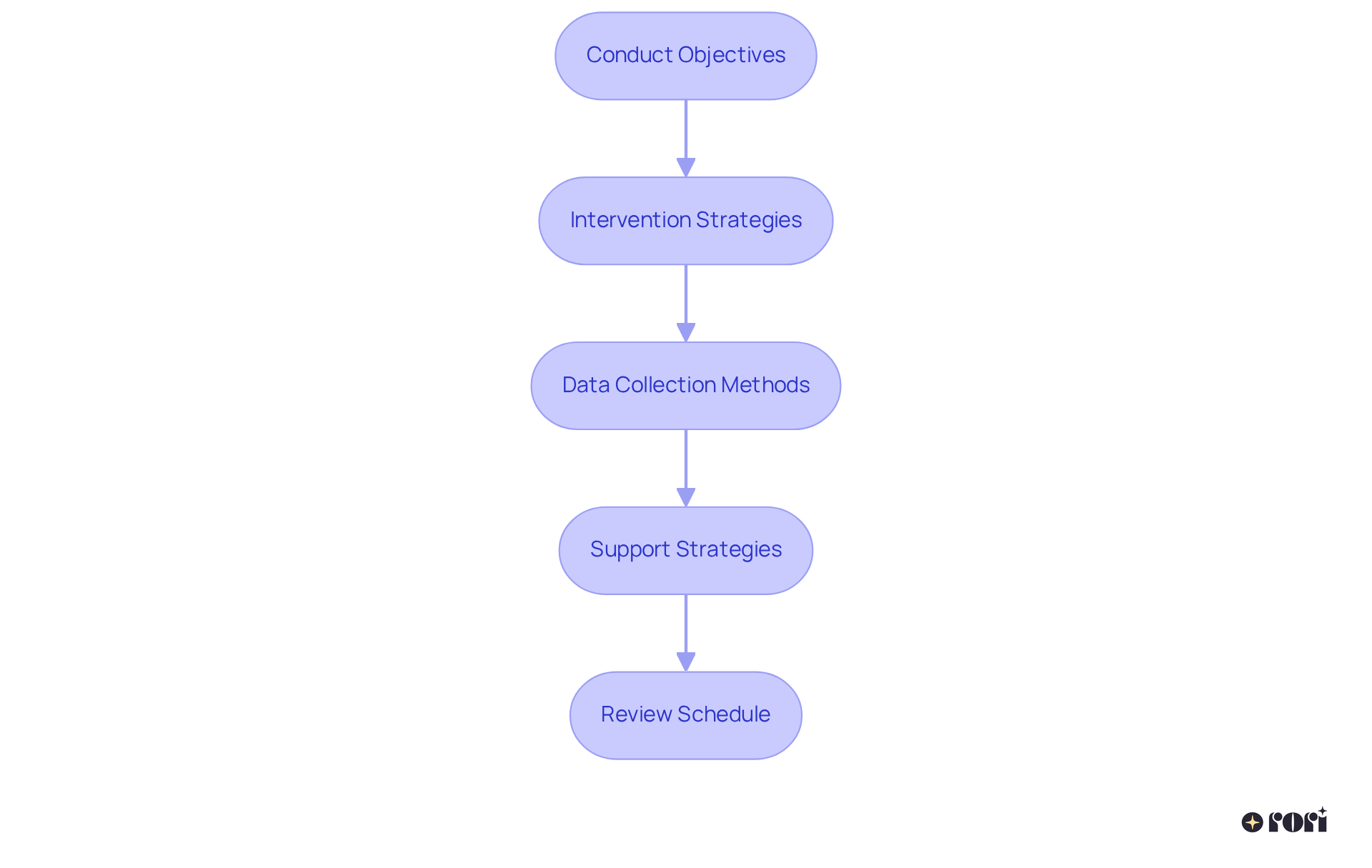
When you're setting goals and objectives for the IBP, it's important to make sure they're measurable and achievable. Let's talk about the SMART criteria:
Let’s explore this together and see how these goals can make a difference!
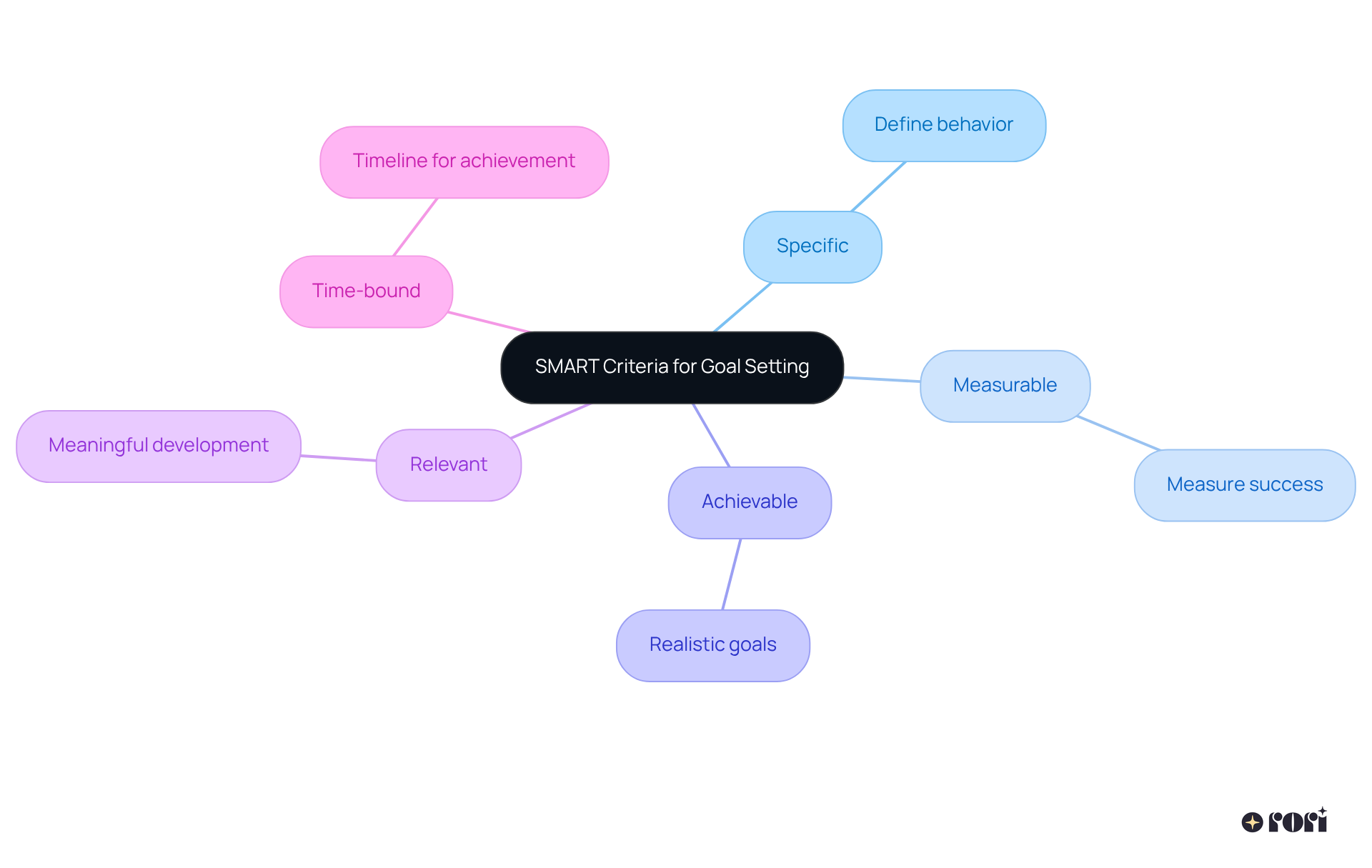
Once the individual behavior plan is ready, the next important step is to put it into action! Start by bringing everyone on board—parents, teachers, and therapists—so they understand the strategies laid out in the document. It’s all about consistency; when everyone is on the same page, it creates a supportive atmosphere for the young one.
Keeping an eye on the young one's progress is essential! Use effective data gathering techniques like direct observation, checklists, and rating scales mentioned in the plan. Make sure to maintain detailed records of the individual’s behavior, noting any changes or patterns that arise. This ongoing review process is vital. Research shows that 90% of individuals make remarkable progress when caregivers are actively involved in ABA therapy.
By regularly checking how well the interventions are working, everyone can see if the individual is moving toward their goals. Applying best practices, like setting specific, measurable goals tailored to the individual’s needs and incorporating visual aids, can really enhance the monitoring process. This ensures that the individual behavior plan remains flexible and adapts to the evolving needs of the individual. Let’s explore this together!
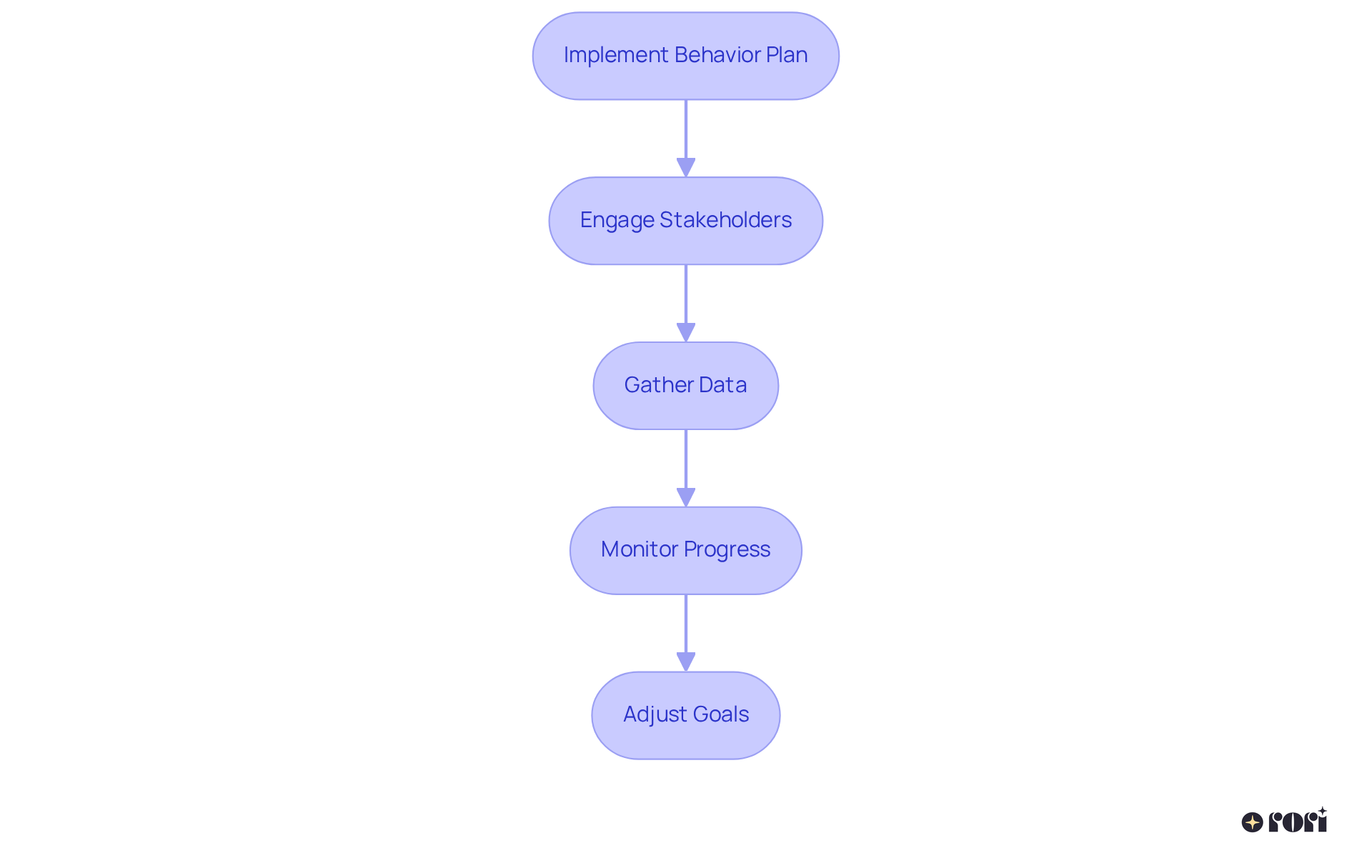
Regularly checking in on the IBP is super important to make sure it’s still working for the individual. Think about scheduling reviews every month or so—this helps us see how effective the interventions really are. Take a look at the data you’ve gathered to see if the young person is making strides toward their goals.
If you notice that some strategies aren’t quite hitting the mark, don’t hesitate to adjust the plan! This could mean:
Flexibility is key here, as the child's needs can change over time, and the IBP should reflect those shifts. Let’s explore this together and ensure that we’re meeting their evolving needs!
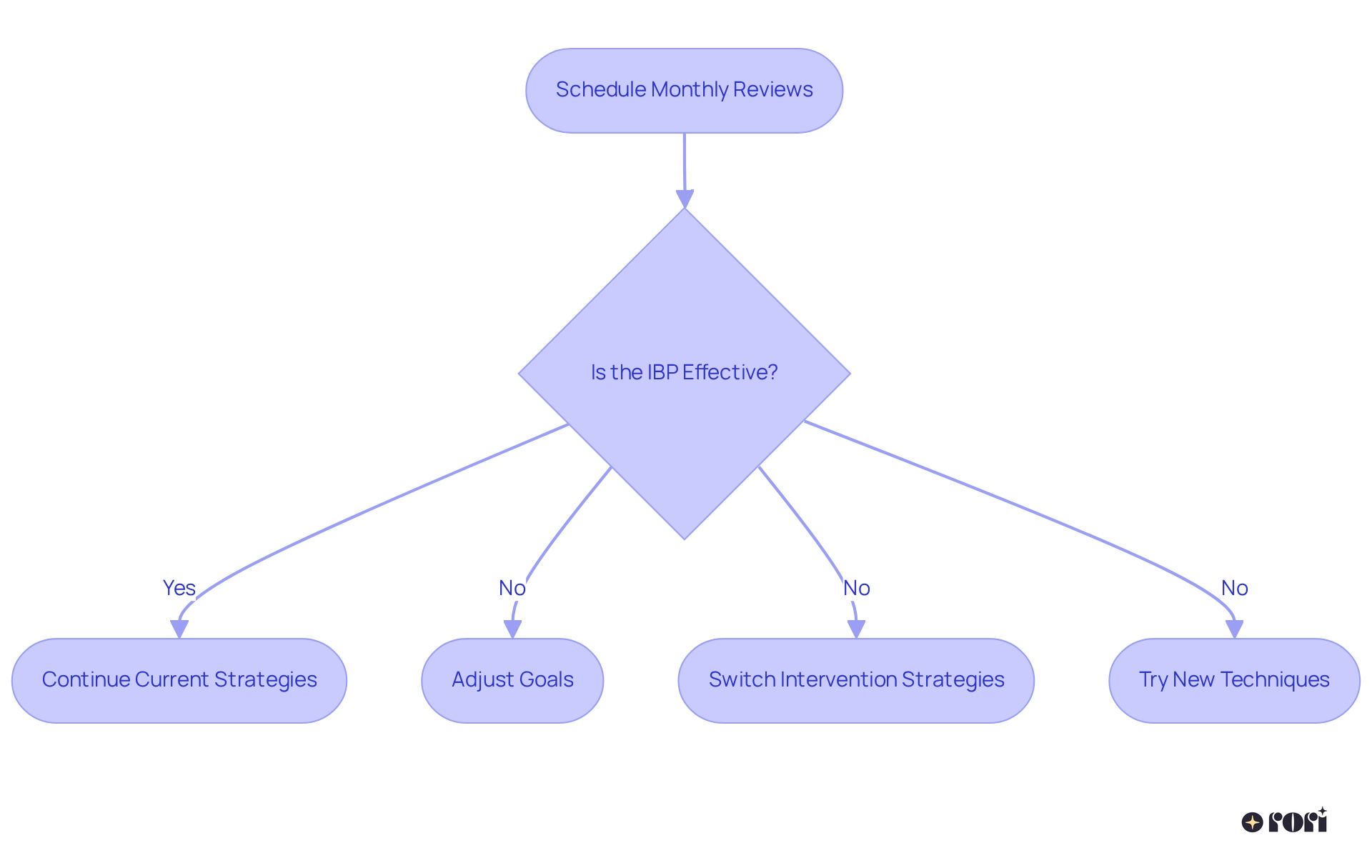
An effective individual behavior plan (IBP) is such a valuable tool for supporting children with autism. It’s all about addressing their unique behavioral challenges in a way that feels personal and tailored to them. By customizing strategies to encourage positive behaviors and independence, caregivers and clinicians can truly make a difference in these young individuals' developmental journeys. An IBP doesn’t just help reduce negative behaviors; it also focuses on nurturing essential social skills and personal growth.
Creating an IBP involves a thoughtful and comprehensive approach. It starts with thorough assessments to really understand a child's specific needs. Think about setting clear, measurable goals and using evidence-based intervention strategies. Consistent support from parents and caregivers is key to success! Plus, regular evaluations and the flexibility to adjust the plan as needs evolve are crucial. This ensures that the strategies stay effective and relevant.
Ultimately, developing an individual behavior plan is a team effort. It requires commitment and adaptability from everyone involved. By focusing on each child's unique needs and actively participating in the planning process, caregivers can foster a supportive environment that promotes growth and independence. This proactive approach not only benefits the child but also enriches the lives of their families and communities. It really highlights the importance of tailored behavioral strategies in paving the way for a brighter future for children with autism. Let’s explore this together!
What is an individual behavior plan (IBP)?
An individual behavior plan (IBP) is a personalized strategy designed to address specific behavioral challenges faced by a youth with autism. It aims to understand and change behaviors that may hinder the young person's growth while promoting positive behaviors, social skills, and independence.
Why is an individual behavior plan important?
An individual behavior plan is important because it provides a clear framework for understanding and modifying behaviors, leading to better outcomes for the young individual and their family. It ensures that interventions are relevant and effective.
How do you start creating an effective individual behavior plan?
Creating an effective individual behavior plan starts with a comprehensive assessment of the child's unique needs. This involves gathering insights from parents, teachers, and clinicians to develop a well-rounded view of the child’s behavior and triggers.
What methods are used to assess a child's needs for an individual behavior plan?
Methods for assessing a child's needs include using standardized assessment tools, observational data, and interviews. This comprehensive evaluation helps identify the child's strengths, interests, and areas for growth.
Who can help with the assessment process for an individual behavior plan?
Psychiatric experts can provide thorough evaluations that enhance the credibility of the assessment process. Additionally, caregivers and clinicians play a vital role in understanding the child's needs.
How can play be beneficial in understanding a child's needs?
Trusting play can reduce the pressure of managing a child's development, allowing for a more natural understanding of their needs. It helps caregivers observe behaviors in a relaxed environment.
What is the ultimate goal of an individual behavior plan?
The ultimate goal of an individual behavior plan is to foster the child's growth and independence by addressing their behavioral challenges and promoting positive behaviors and social skills.